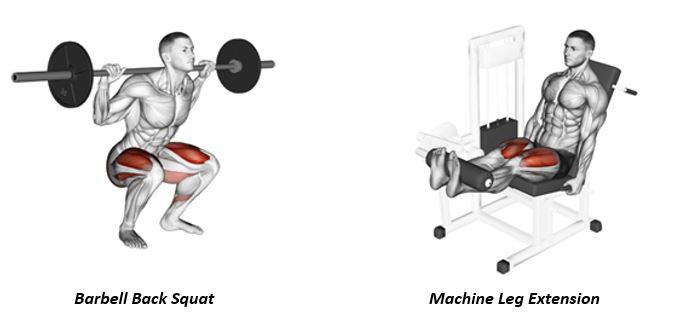FREE WEIGHTS VS MACHINE TRAINING
I’d like to spend some time today discussing a number of key differences between free weight workouts and machine training, along with the main benefits of both methods. In the last 2 decades, most gyms are becoming well equipped with machines for all types of muscles. The more up-to-date the machines, the more appealing the gym will be for people to subscribe. However in these gyms, you can also find free weights and Olympic bars to carry out different types of free weight workouts including Olympic lifts.
When members are new to a particular gym, most trainers teach them how to use machines correctly. This tends to be a very good starting point for people who have never properly trained in the past, as it helps them develop some level of strength and improves their body composition as well as muscle mass.
The main problem most people face with this particular type of training is that they eventually become accustomed to machines (a common trend I have noticed especially in females and elderly people). Instead of trying different exercise variations for each muscle, machine workouts continue to be relied upon as they tend to be easier to perform, given the machines’ ability to guide your muscles to lift weights safely. Machine weights work more on isolated muscles, such as biceps, and are usually suitable for beginners and people suffering from injuries because of their safety and design made to be adjusted for all kinds of angles and sizes.
However, working out with machines alone in the long term will make your body adapt easily to the exercises and will create weaknesses in your body, especially in the core muscles. Free weights, on the other hand, are versatile and inexpensive. They simulate real life lifting situations and promote whole body stabilization.
By way of example, let’s look at the key differences between the barbell squat (free weight exercise) and leg extension (using a machine).
 The squat is a compound full body exercise that trains the muscles of the thighs, hips, buttocks, quadriceps and hamstrings, in addition to strengthening the bones, ligaments and tendons through the lower body, the lower back, upper back and abdominal which are used for stability while the movement is being performed. The trunk muscles, shoulders and arms are also trained when squatting with proper form.
The squat is a compound full body exercise that trains the muscles of the thighs, hips, buttocks, quadriceps and hamstrings, in addition to strengthening the bones, ligaments and tendons through the lower body, the lower back, upper back and abdominal which are used for stability while the movement is being performed. The trunk muscles, shoulders and arms are also trained when squatting with proper form.
During the descending phase of a barbell squat, your hamstrings are being activated with eccentric contractions which cause muscles to elongate in response to a greater opposing force (i.e. the muscles are working hard not to allow the weight to fall) and your lower back muscles are working hard not to allow your torso to lean to the front; while during the ascending phase, your abs and core muscles are focused on stabilizing the weight and your quadriceps are working concentrically (which causes muscles to shorten, thereby generating force).
The leg extension machine works on isolated quadriceps, so you will not be achieving the same varied benefits mentioned while doing the barbell squat.
So as demonstrated, machine weights focus more on isolative muscles, while free weight compound lifts train more muscles together, thus burning more calories when being done and helping every part of your body become stronger in the process. Another advantage of free weights is that they can also be used to correct imbalances. For instance when performing a shoulder dumbbell press with one hand at each side, you are focusing on each hand to do the same number of repetitions, hence correcting imbalances if one hand starts off being stronger than the other.
The kind of exercise that uses each limb alone is “unilateral”, while “bilateral” exercises use both at the same time. The unilateral form promotes range of motion, is lighter than the bilateral form and more helpful in correcting muscle imbalances.
Ultimately, the choice between using free weights and machines is based upon your personal preferences, physical fitness levels, fitness goals and access to equipment. I’d also recommend following these general guidelines:
- If you are an athlete and competing for a basketball game, the best training for you would be to use free weights and Olympic lifts e.g. squats, clean and jerk.
- If you are an athlete and you’re recovering from an injury, your physician will recommend that you strengthen your muscles using machines under specific angles and ranges of motion.
- If you are a body builder, a combination of both compound movements (free weights) and machines can be implemented in your work-out; compound movements ensure that you gain strength, while isolated free weights and machine movements can help you achieve a better muscle physique by focusing more on isolated muscles.
- If your aim is to be fit, have an injury free body, be able to run and perform other athletic movements, free weight compound movements should be your choice, since they promote movement rather than isolated muscles. This is known as functional training because it is based on practical tasks directed towards everyday life activities and the use of real life object manipulation. It also involves weight bearing activities targeted at core muscles of the abdomen and lower back. Finally, functional training helps to prevent injuries.



